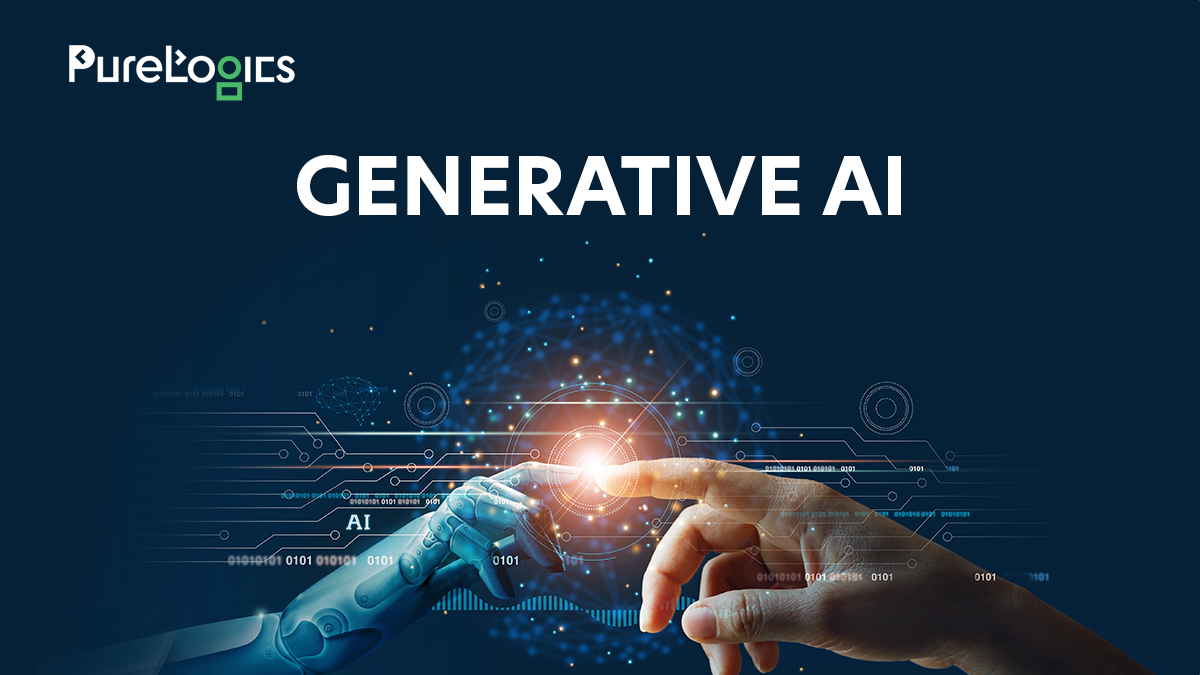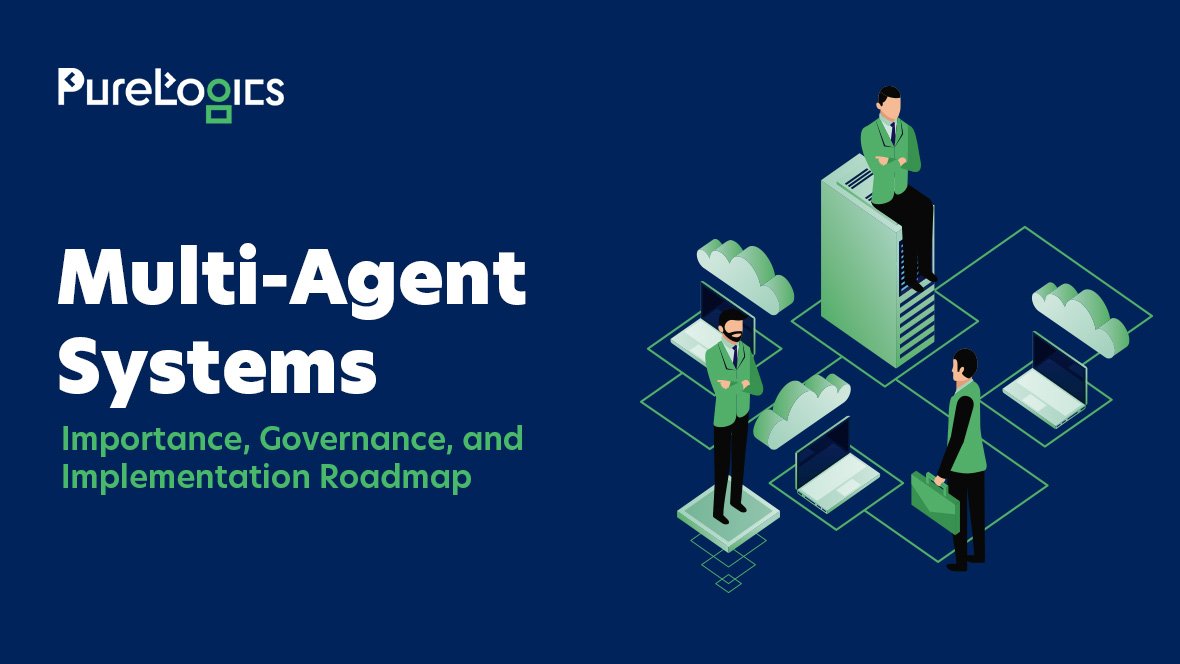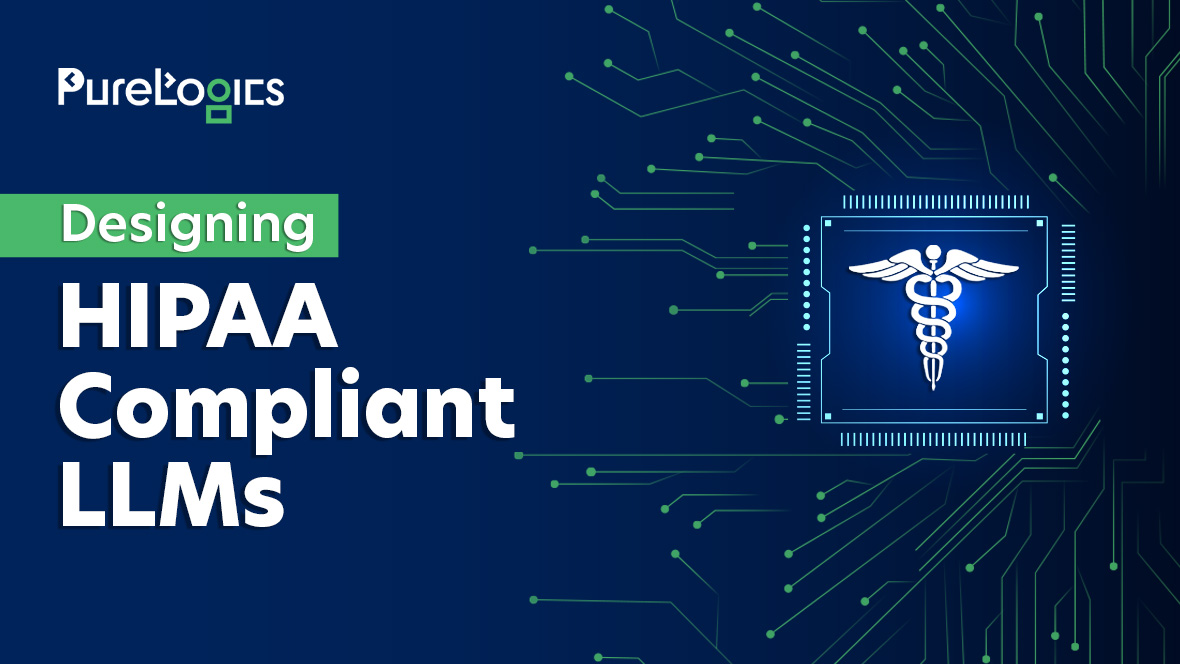Generative AI is an innovative technology that has completely changed our approach towards artificial intelligence. Whether it is audio, content, code, images, videos, simulations, or even music, algorithms of generative AI do everything.
There is not even a single industry in the world that isn’t experiencing its revolution. The world we’re living in is the world of generative AI. It has been revolutionizing each and every industry, enhancing user experiences, improving customer support, and creating a wealth of new possibilities to make humans more creative.
In 2023, you all would have witnessed groundbreaking breakthroughs in generative AI, which have pushed the boundaries of what was just imagined before. One such breakthrough is the launch of ChatGPT, which reached 1+ million new sign-ups in the first five days only.
Curious to know about generative AI and its models? Want to know how AI works and what are their models, challenges, and use cases? Let’s unlock everything about generative AI together!
Understanding Generative AI
Search engines like Google, Bing, etc., are loaded with this search query: what is generative AI?
According to IBM, “Generative AI relates to deep learning models that have the ability to produce top-quality images, text, and other types of content on the basis of the data they were comprehensively trained on.”
That is a mouthful. Let’s define this in simple words.
Generative AI is the art and science of generating new content. This content can be in different forms like text, music, audio, images, ideas, videos, or even music. It’s like having a digital creative assistant with the abilities of a human. This digital assistant is at your beck and call and is always ready to produce authentic and innovative content for you.
Generative AI is no longer an idea; it has become an essential part of our lives.
The most common generative AI applications are large language models (LLMs). These models employ algorithms of deep learning to analyze a large amount of data to understand how human language is usually structured and how it creates innovative-cum-authentic content ‘motivated’ by its training corpus.
Now, let’s dive into the world of Generative AI and learn about its models and the exceptional opportunities it brings.
How Does Generative AI Work
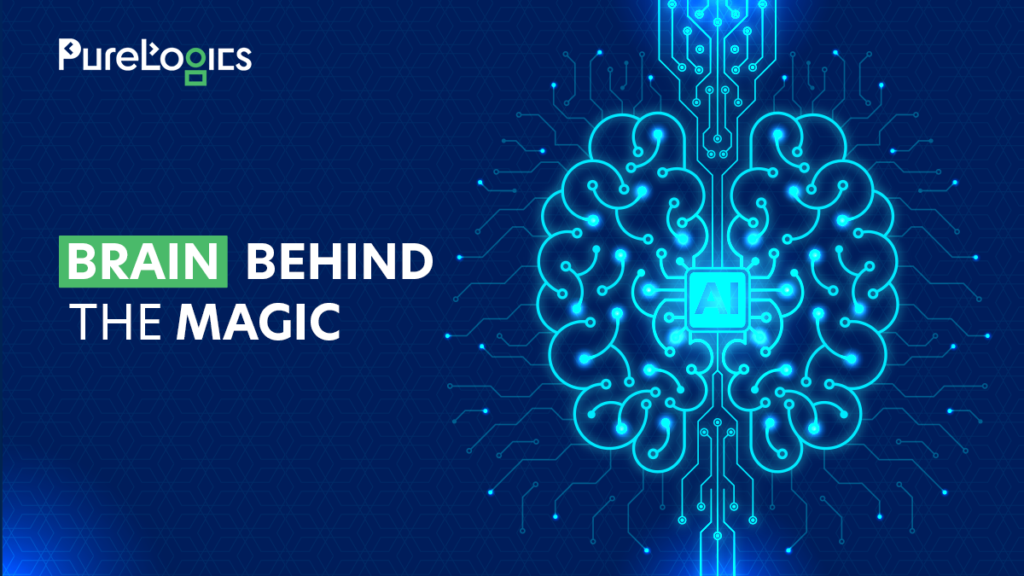
The brain behind the magic of generative AI is generative models. These models are actually neural networks that have been specially designed to understand and mimic patterns in data. After this, the models produce new, authentic, and innovative content based on their learning.
One of the top innovations of generative AI models is their capability to utilize multiple learning strategies. These include unsupervised and semi-supervised learning for training.
One of the famous examples of foundation models is GPT-3 (Generative Pre-trained Transformer 3), with a staggering 175 billion parameters. It allows you to use the power of language to perform various tasks.
For example, ChatGPT allows you to generate essays, code, emails, and multiple other things on the basis of the prompts you give to it.
Generative AI Models
Now, let’s have an eye-bird view of the few generative AI models!
Generative Adversarial Networks (GANs)
There are two primary parts of GANs: generator and discriminator. The primary goal of the generator is to generate new data, while the discriminator aims to determine whether the produced data is authentic or false.
The applications of this generative AI model are in computer vision apps such as image synthesis, style transfer, etc.
Variational Autoencoder (VAE)
Like GANs, Variational Autoencoders also consist of two parts: encoder and decoder. The goal of the encoder is to properly encode the input data and transform it into a latent representation. On the other hand, the decoder decodes the latent representation into new, fresh data.
VAEs are widely used in natural language processing applications such as text generation and dialogue generation.
Autoregressive Models
Autoregressive models are among the top generative models that predict the next token in a sequence based on the previous tokens. The transformer model is one of the widely-famous examples of Autoregressive models.
This model performs natural language processing tasks like language translation and summarization of texts.
Generative Flow Models
A flow-based generative model (or generative flow model) is a generative AI model employed in machine learning to map a simple prior distribution and transform it into a complex one.
A well-known example of a generative flow model is the Normalizing Flow model. It is usually used to generate images, predict videos, and synthesize audio.
Use Cases of Generative AI
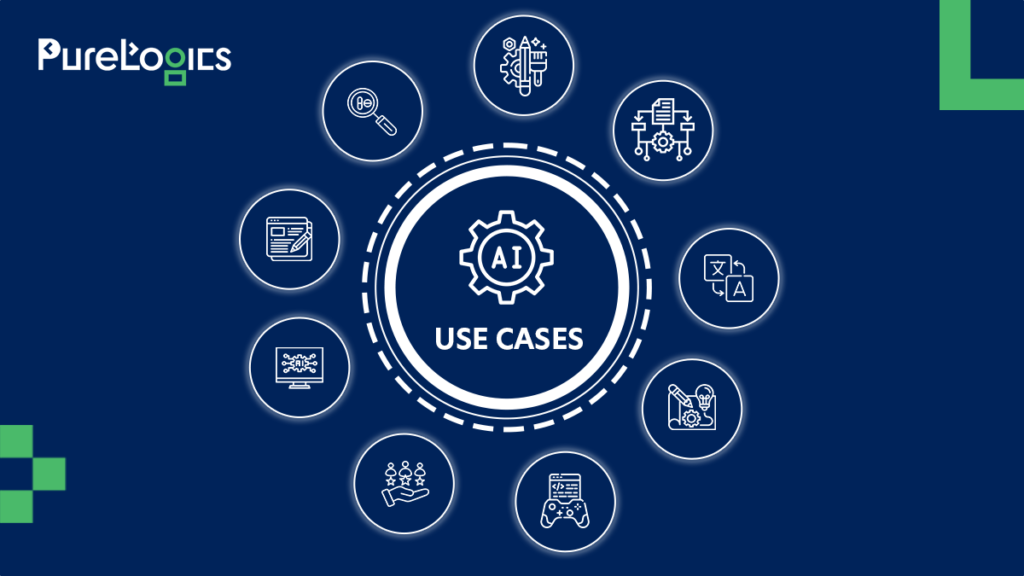
The impact of generative AI on business is highly promising; there is nothing short of astonishing. It has already started revolutionizing multiple industries, including healthcare, marketing, e-commerce, gaming, advertising, education, media, and more.
Let’s look at the following some remarkable use cases of generative AI.
Drug Discovery
Do you know what the average cost of a new drug discovery and its launch in the market is? A 2010 study says that it’s about $1.8 billion, which is about one-third of the cost of drug discovery.
However, generative AI has started developing drugs for various applications in only a few months. It provides the pharmaceutical industry with an incredible opportunity to not only reduce the cost but also decrease the timelines of drug discovery.
Content Creation
Generative AI is similar to your personal assistant that can generate authentic and innovative content on demand. In layman’s language, it is your personal robot writer who will write anything you ask him to write.
Whether you want it to write for journalism, marketing, or e-commerce, it crafts content for you. This means you can ask it to produce content for your business at any scale and save time and resources.
Gaming Solutions
Generative AI has started revolutionizing the gaming industry. The leading game development companies are heavily using AI to develop new game elements like characters, levels, and more.
One feature that makes AI stand out is its ability to understand existing game elements and develop new, top-notch elements. Companies like PureLogics use AI in game development to predict and fix errors in the game code and create highly appealing and user-friendly games.
Conversational AI Tools
Generative AI is the force behind the extensive growth and popularity of conversational AI tools like chatbots and virtual assistants. They have made technology more accessible to everyone in the world.
When it comes to businesses, it offers exceptional support to customers, provides personalized responses to customer queries, and decreases the extensive load on customer support representatives.
Personalized User Experiences
You know that personalization is a thing that every user of this 21st century demands today from every brand. So, you can use generative AI to provide personalized user experiences.
These generative AI models can learn from user behavior and preferences and develop user-customized content, recommendations, and more.
Netflix is a big example that is heavily using generative AI to provide its users with customized user experiences. For instance, Netflix analyzes the viewing history of users and offers personalized TV shows or movie recommendations accordingly.
Product Design and Development
Generative AI also has applications in design and development. You can use its models to gather new design ideas. Generative AI models are so powerful that they can learn from available formats and develop new captivating designs that will speed up your product design and development processes.
Language Translation
Language translation isn’t rocket science today; all credit goes to transformative generative AI. Generative AI models like GPT-3 now translate languages quickly and accurately. This makes it easier for every business to expand its services across the world.
Creates Algorithm
No one has enough time to do everything by hand. So, start harnessing the benefits of new ML algorithms and automate your business operations.
Save your precious time and resources, as it is an era of generative AI. Artificial intelligence can scan algorithm combinations in no time and figure out promising ones for speedy development.
Creative Arts
Another industry that is embracing generative AI is the creative arts industry. You surely would have seen on social media that AI-created art and music are gaining immense popularity around the world.
Today, many artists and musicians have started using AI to create new art that captivates audiences worldwide. However, this is just a new beginning; generative AI has huge potential for the art industry. The artists who have welcomed this revolutionary technology have already started reaping its incredible benefits.
Challenges of Generative AI
Generative AI holds a strong promise of turning dreams into reality, but it is not without its challenges. Just like the mythological figure of Prometheus, who stole fire from the gods and brought it to humanity, Generative AI can be both a boon and a burden.
So, what are the concerns that complicate generative AI? Let’s explore some challenges that gen AI faces today seriously.
To Allow or Not
Many reports claim that many companies, even big names, didn’t allow their employees to use generative AI tools like ChatGPT due to multiple concerns. Their biggest concern was the security of their proprietary data.
Afterward, many companies lifted their bans and allowed employees to use it to attain the benefits of AI. However, there are still many companies around the globe that don’t allow the use of this technology.
Data Privacy
In spring 2023, Samsung imposed a ban on the employee usage of generative AI tools. They found out that some of their internal source codes were uploaded to ChatGPT.
After this, many other companies are also raising data privacy concerns. They say that how do they ensure that their sensitive information won’t be exposed or exploited in the AI-produced content?
No Quality Guidance Yet
It is one of the major challenges people today face while using generative AI tools. AI is new to them, and they don’t know how to actually harness its maximum potential. The businesses that use AI have no particular guidance and support.
Bias and Fairness
Generative AI models often have biases in their training data. This results in the generation of content having unfair or discriminatory views. These problems have been identified by many users around the world. It is a pressing concern in the world of generative AI.
Final Remarks
Now, you can see that the future of generative AI services is incredibly dazzling. This revolutionary technology, offered by leading generative AI services companies, will surely develop itself as one of the leading technologies every business will use to stay competitive and achieve their business goals. AI is so versatile that you can customize it as per the specific needs and requirements of your business.
Want to know more about the applications of generative AI? Or want to know how to use AI to get the maximum benefits for your business?
Feel free to contact our best and brightest team of software developers with an extensive background in delivering top-notch AI solutions across different domains as a renowned generative AI services company.
PureLogics: We believe in logic, not magic!


 [tta_listen_btn]
[tta_listen_btn]
 November 7 2023
November 7 2023

